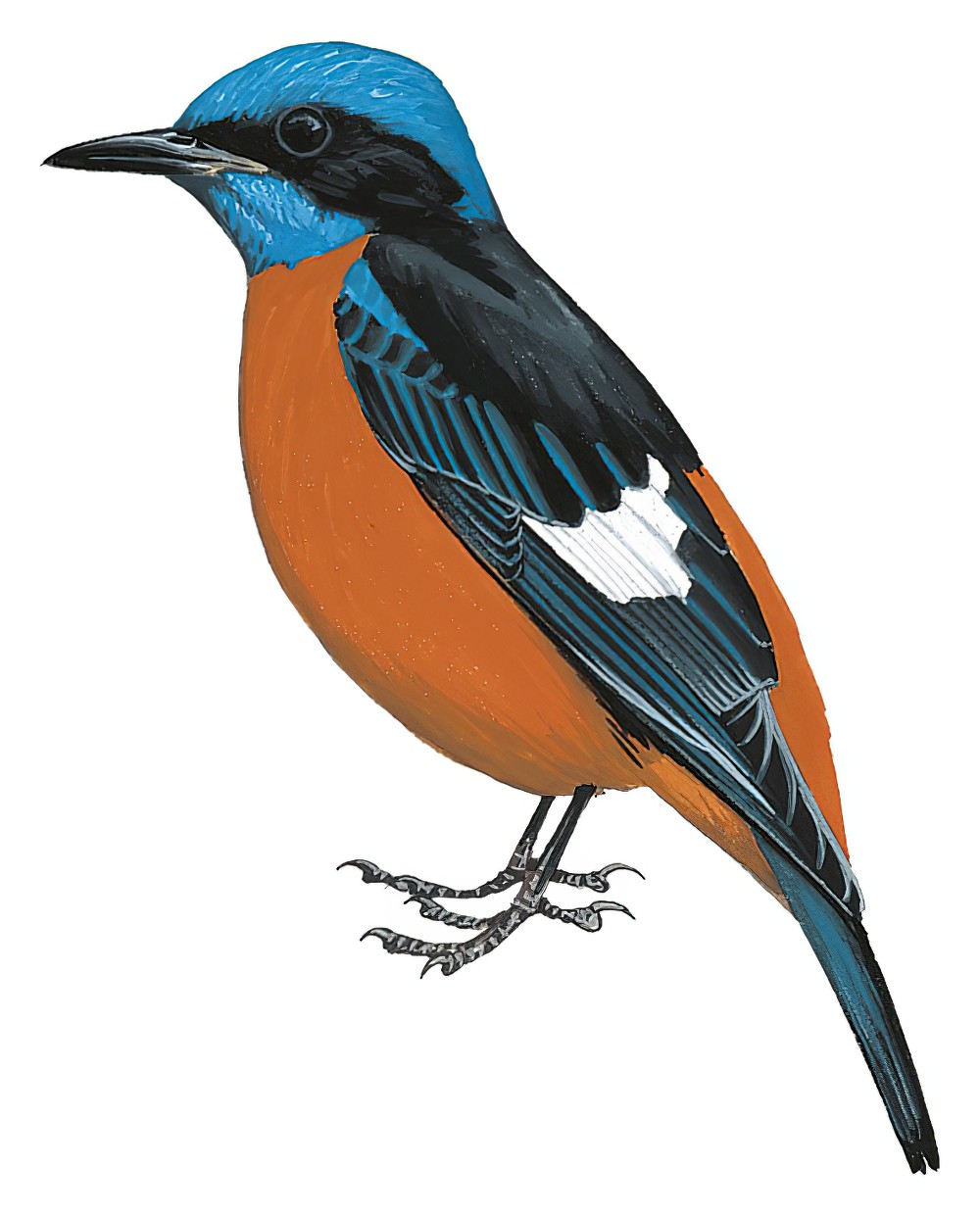Blue-capped Rock-Thrush / Monticola cinclorhyncha

Blue-capped Rock-Thrush
SCI Name:
Protonym: Petrocincla cinclorhyncha Proc.Zool.Soc.London Pt1 no.14 p.172
Taxonomy: Passeriformes / Muscicapidae / Monticola
Taxonomy Code: bcrthr1
Type Locality: Himalayan mountains [= Simla, fide Baker, 1921, Journ. Bombay Nat. Hist. Soc, 27, p. 719].
Author: Vigors
Publish Year: 1831
IUCN Status: Least Concern
DEFINITIONS
MONTICOLA
(Muscicapidae; Ϯ Rufous-tailed Rock Thrush M. saxatilis) L. monticola mountain-dweller, mountaineer < mons, montis mountain; -cola inhabitant < colere to dwell; "22. Familie. Drosseln, Turdus. 43. Gattung. Monticola.2 85. saxatilis 86. cyanus. ... 2 Unterscheidendes Kennzeichen der Gattung: das rostrothe oder schieferblaue Gefieder." (Boie 1822); "Monticola Boie, 1822, Isis, col. 552. Type, by subsequent designation (G. R. Gray, 1847, Gen. Birds, 1, p. 220), Turdus saxatilis Linnaeus." (Ripley in Peters 1964, X, 135).
Synon. Colonocincla, Cyanocincla, Migratorius, Notiocichla, Notiocincla, Orocetes, Oroscirtetes, Petrocincla, Petrocossyphus, Petrophila, Petrornis, Pseudocossyphus.
monticola
L. monticola mountain-dweller < mons, montis mountain; -cola dweller < colere to inhabit.
● Namaqualand; ex “Traquet Montagnard” of Levaillant 1806, pl. 184, fig. 2 (Dromolaea).
● Hudson’s Bay; ex “Mountain Finch” of Latham 1783 (syn. Spizella arborea).
● Canada; ex “Moineau du Canada” of Brisson 1760, and d’Aubenton 1765-1781, pl. 223, fig. 2, and “Soulciet” of de Buffon 1770-1783 (?syn. Zonotrichia leucophrys).
cinclorhyncha / cinclorhynchus
Mod. L. cinclus thrush < Gr. κιγκλος kinklos small unidentified waterside bird; Gr. ῥυγχος rhunkhos bill.
● “This bird was observed to bear an affinity to the family of Merulidæ by the strength and Thrushlike form of the bill; and by its general character of form and colour to that portion of it which includes the Rock Thrushes; where it was provisionally placed, until more accurate comparison of the species with contiguous groups determined its station. Its bill was more that of the true Thrush, than of the Rock Thrush. Its colours were those of Phœnicura; under which genus it was erroneously ranked by accident on the plate. The bill is too powerful to admit the species among the Sylviadæ.” (Vigors 1832) (Monticola).
UPPERCASE: current genus
Uppercase first letter: generic synonym
● and ● See: generic homonyms
lowercase: species and subspecies
●: early names, variants, mispellings
‡: extinct
†: type species
Gr.: ancient Greek
L.: Latin
<: derived from
syn: synonym of
/: separates historical and modern geographic names
ex: based on
TL: type locality
OD: original diagnosis (genus) or original description (species)












